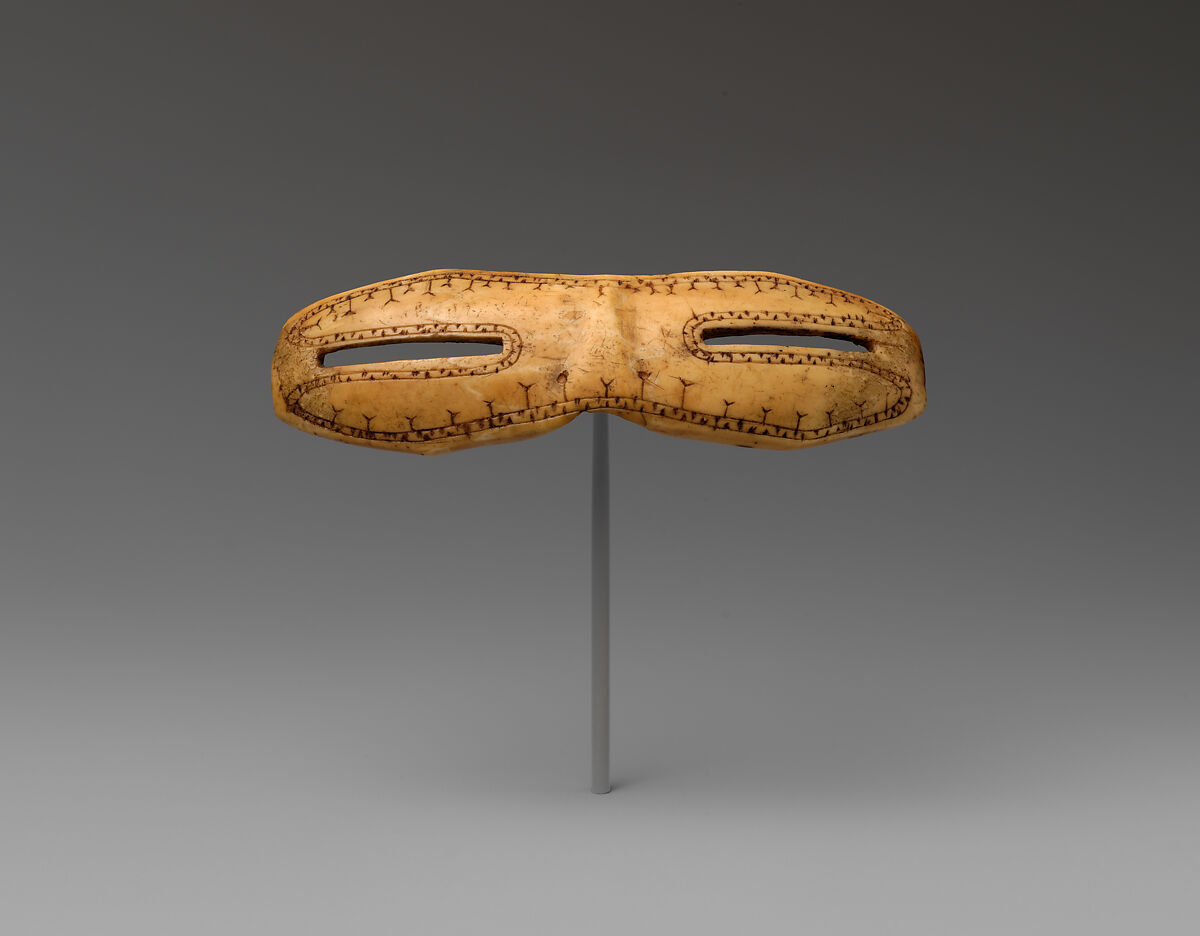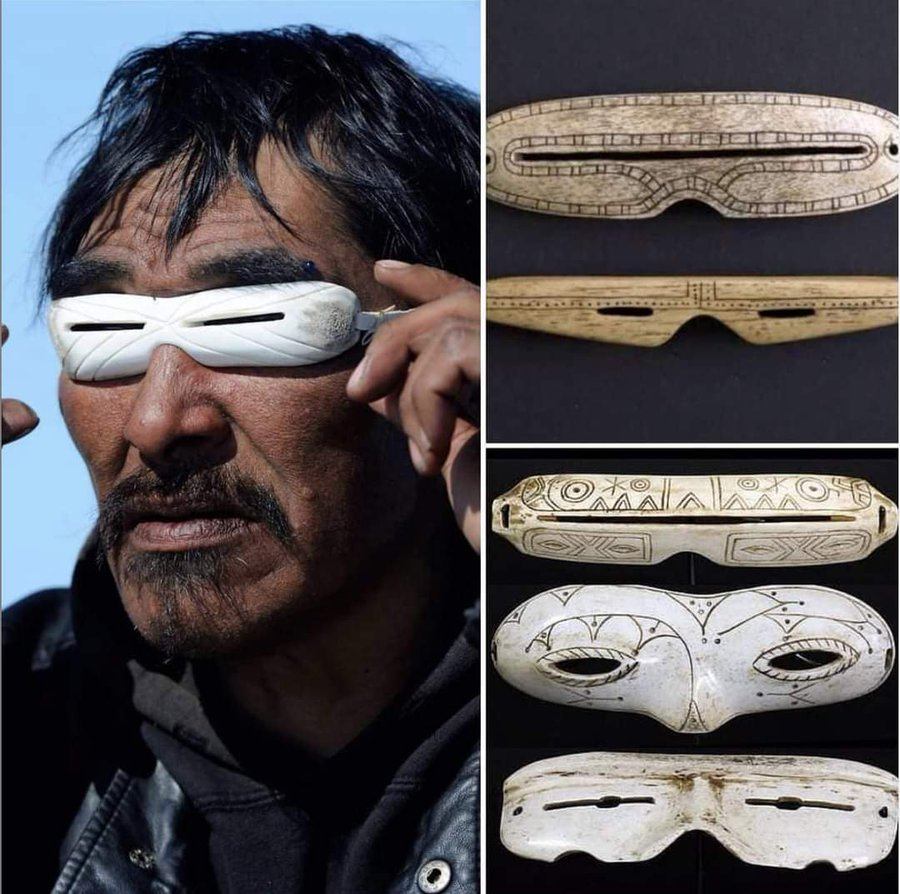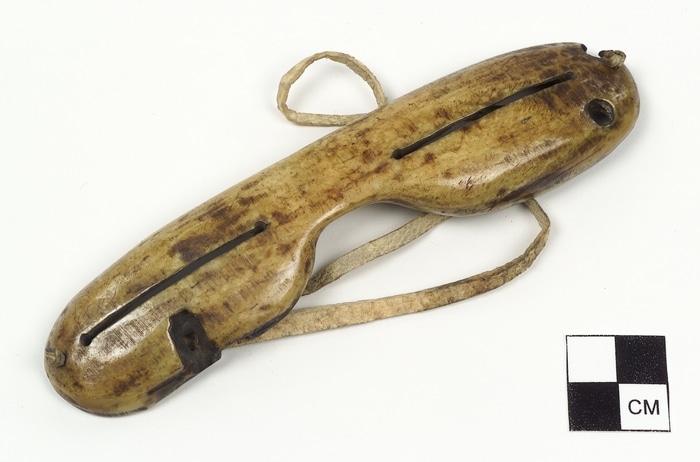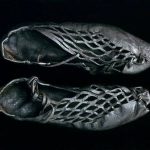Traditional Snow Goggles of the Yupik People

For centuries, the Yupik people—Indigenous inhabitants of Alaska and parts of eastern Siberia—developed innovative ways to survive and thrive in harsh Arctic environments. One of their most remarkable inventions is the snow goggle, a traditional form of eye protection carefully crafted to prevent snow blindness, a painful and potentially dangerous condition caused by overexposure to ultraviolet (UV) rays reflected off snow and ice.

Yupik snow goggles were traditionally carved from natural materials readily available in their environment, such as walrus ivory, caribou antler, or driftwood.

These goggles featured narrow horizontal slits, which significantly reduced the amount of sunlight entering the eyes, limiting glare and UV exposure while still allowing the wearer to see. The slits functioned much like the aperture of a camera, enhancing depth perception and focus—crucial for navigation and hunting in bright, snow-covered landscapes.

Often custom-fitted to the wearer’s face, some goggles were also lined with fur or sinew for comfort and insulation. Beyond their practical use, snow goggles could also be decorated with carvings or patterns, reflecting cultural identity and artistic expression within the Yupik community.











